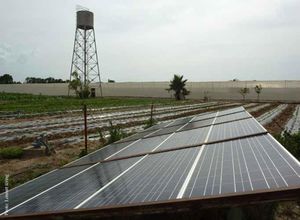SPIS Toolbox - Hand-over and Training

| ►Back to the Start Page | ►Back to the Module Page | ►Go to the Next Chapter |
7. Hand-over and User Training
The final step of the installation process is to formally hand over the SPIS to the user (producer). The handing-over is usually combined with a thorough introduction to all technical aspects of the system and a practical training on its operation as per the designed performance. This step should be thoroughly planned because the user should have sufficient time to go through all system components and operation and maintenance aspects together with the technicians of the installer.
Prior to this step, all other requirements should have been completed, in particular the PVP acceptance and the system tests and the system’s documentation. Ideally, the user could accompany and follow the entire installation process including the testing steps. This way they will already have obtained knowledge about their system and will have had the opportunity to be familiarized with the main technical and operational features.
During the testing stages of the installation process, defects or quality problems are identified and recorded and an agreement between the installer and the user is concluded on how and when these defects are corrected. This is laid down in the test protocols. A handing over of the system should not take place before all repairs and amendments are implemented.
The handing-over and the related instruction and training usually take place during a final test run of the system. It should not be done as a theoretical classroom exercise. Supporting material for the training should consist of the operational guidelines and the manual that is provided as part of the system’s documentation.
Important features of the orientation and training are:
- introduction to the specifics of all system components;
- operation of the system under different conditions, in particular crop water distribution management based on pressure and supply duration management;
- security precautions and protection of system components;
- health and environmental hazards;
- emergency procedures;
- maintenance works and schedules.
The handing over should be concluded by signing a hand over protocol that states the condition of the system and all activities carried out to instruct and train the producer.
Outcome/Product
- Hand-over protocol.
Data Requirements
- PVP acceptance and system test data;
- System documentation and operation manual.
People/Stakeholders
- Producer;
- Installation service provider;
- Agricultural service provider.
Important Issues
- Hand over should only take place if the system is perfectly running, with no remaining deficiencies.
- Hand over should be accompanied by a practical introduction and training of the user including information on security precautions, system protection and hazards.
- A hand-over protocol should be prepared and signed.
| ►Back to the Start Page | ►Back to the Module Page | ►Go to the Next Chapter |




















